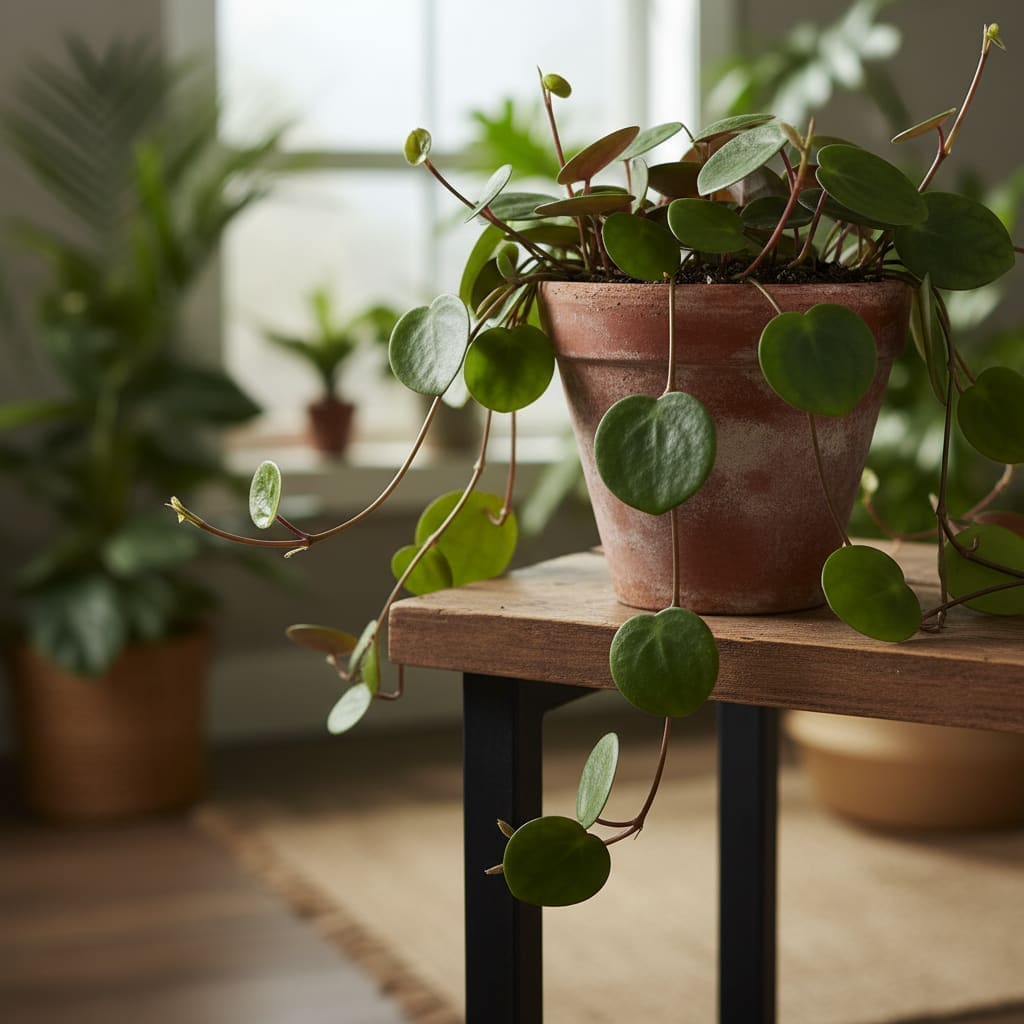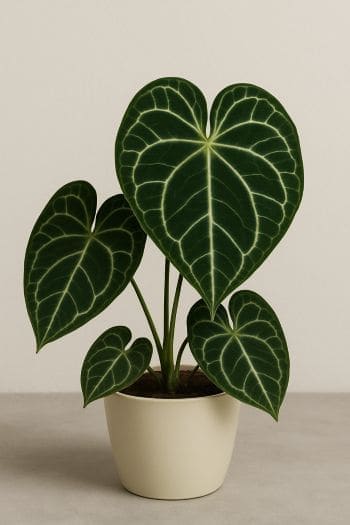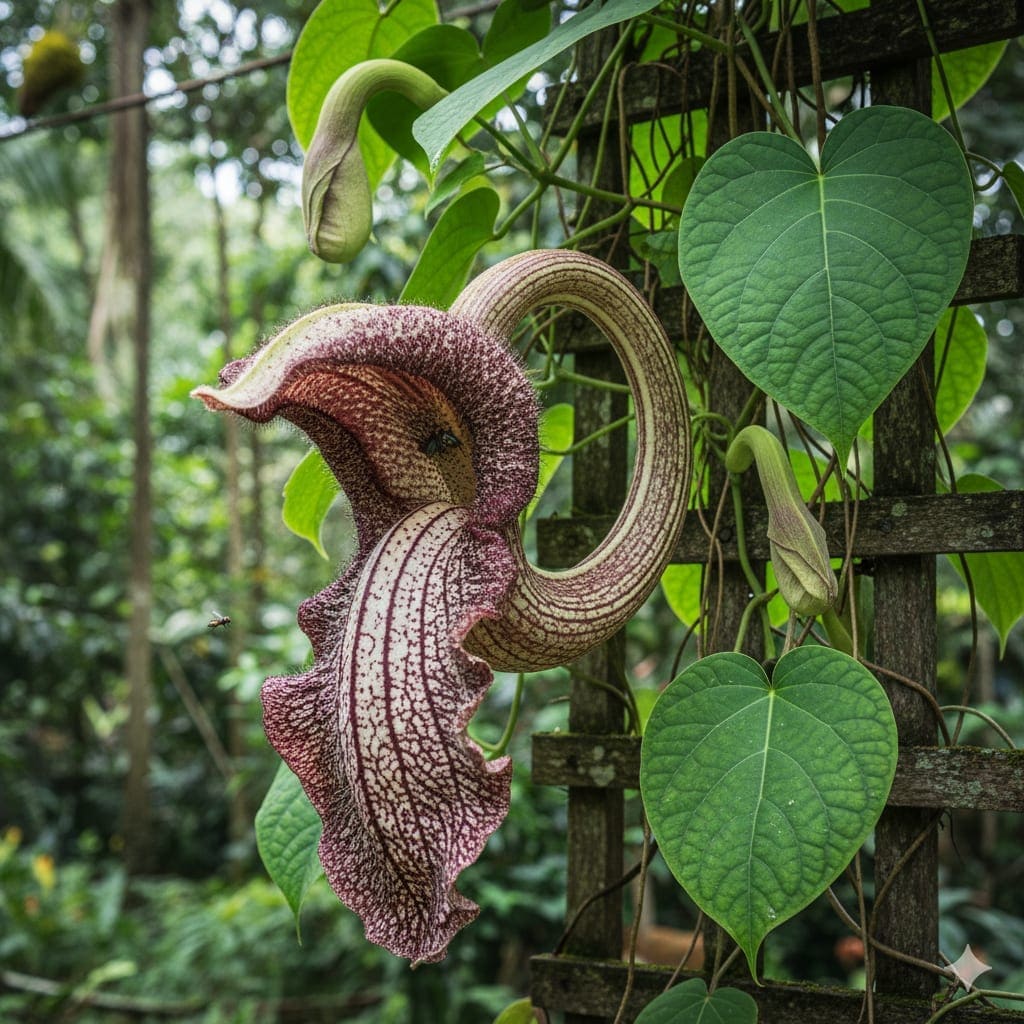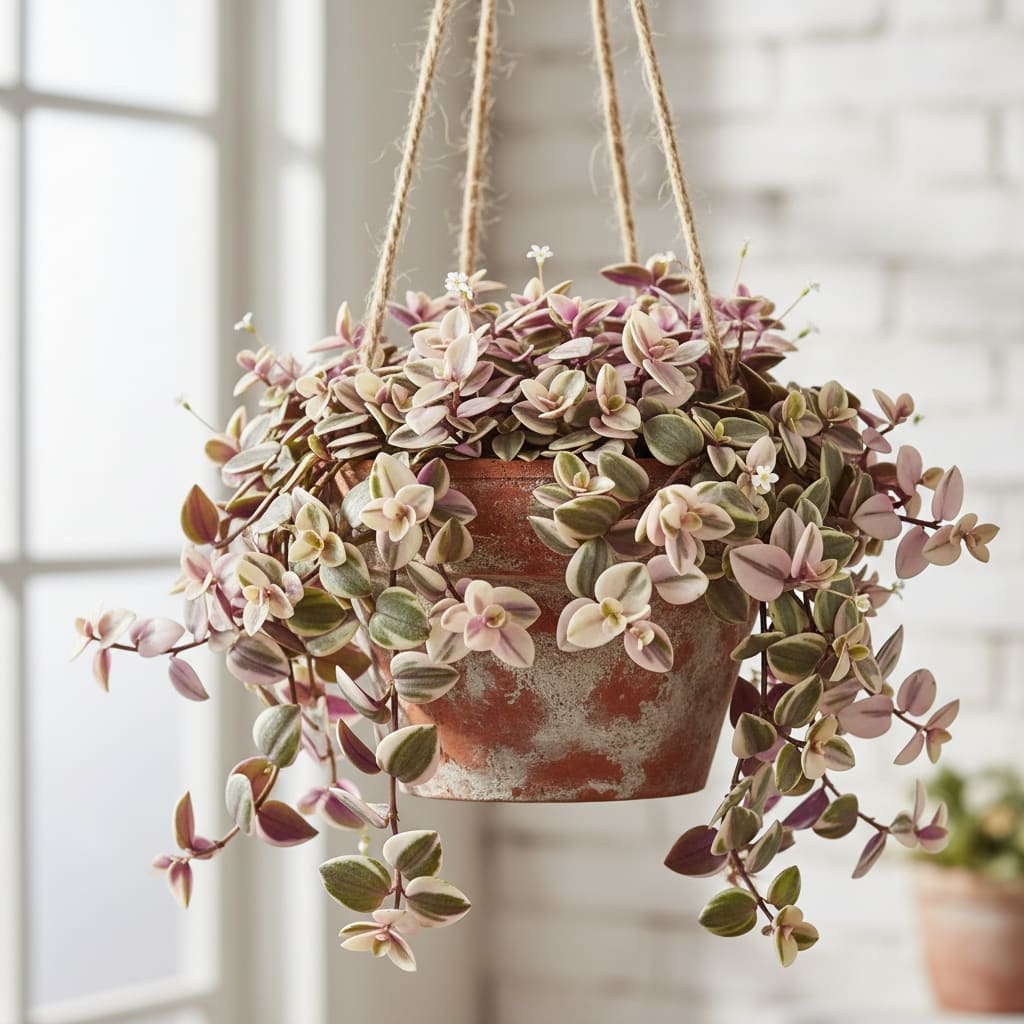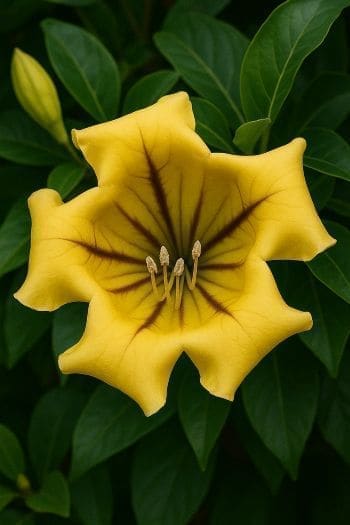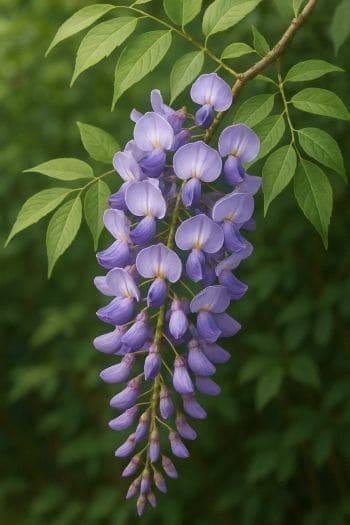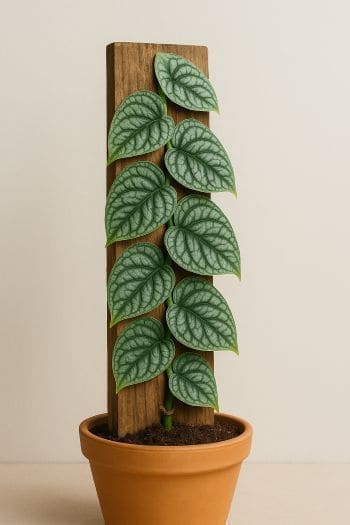Peperomia serpens Care & Growing Guide
Overview
Peperomia serpens is a charming trailing plant native to the tropical regions of Central and South America. Known for its heart-shaped leaves and adaptable growth habit, it is popular as an indoor ornamental. In its natural habitat, it can be found growing terrestrially in soil or epiphytically on trees, benefiting from the dappled light of the forest canopy. This plant is appreciated for its easy-care nature and decorative versatility, making it suitable for hanging baskets, shelves, or trained upward on supports.
Identification & Growth Habit
Peperomia serpens features small to medium, heart-shaped leaves with a smooth texture and vibrant green coloration. The stems are slender and flexible, allowing the plant to trail gracefully over the edges of containers or climb when given support. As a member of the Piperaceae family, it produces inconspicuous flower spikes, though it is primarily grown for its foliage. Its growth habit can be adapted: left to cascade for a soft, flowing look, or trained vertically with a trellis or moss pole.
Light & Placement
This species thrives in bright, indirect light. Position it near an east- or north-facing window, or a few feet back from a bright south- or west-facing exposure with sheer curtains for filtering. While it can tolerate medium light, growth will be slower and foliage may be less dense. Avoid prolonged direct sunlight, which can scorch the delicate leaves.
- Best indoor location: Near bright windows with filtered light.
- Outdoor placement: Shaded patio or balcony in warm climates, protected from midday sun.
Watering & Humidity
Water when the top 1–2 inches (2.5–5 cm) of soil feel dry to the touch. Use room-temperature water and allow excess to drain freely. Overwatering is the most common cause of decline, as this plant is sensitive to root rot. Reduce watering frequency in cooler months when growth slows.
Peperomia serpens enjoys moderate to high humidity. Typical household humidity is often adequate, but in dry environments, occasional misting or the use of a humidifier can help maintain leaf health. Grouping plants together can also raise local humidity.
Soil & Repotting
Use a well-draining potting mix—commercial succulent or cactus soil works well, or create your own blend with equal parts peat moss and perlite. Ensure the container has drainage holes to prevent waterlogging.
Repotting is rarely needed more than every 2–3 years, as Peperomia serpens has a relatively small root system. When repotting, choose a container only slightly larger than the current one to avoid excess soil moisture retention.
Fertilizing
Feed monthly during the active growing season (spring and summer) with a balanced, water-soluble fertilizer diluted to half the recommended strength. Avoid fertilizing in autumn and winter when growth naturally slows. Over-fertilizing can damage roots and cause leaf burn.
Pruning & Training
Prune to maintain shape, encourage bushier growth, and remove any damaged or yellowing leaves. Pinching back stem tips can promote branching. For a climbing display, train stems onto a small trellis or moss pole, securing gently with plant ties. For trailing arrangements, allow stems to cascade freely from hanging baskets or elevated shelves.
Propagation
Step-by-Step Stem Cutting Propagation
- Select a healthy stem with at least one node and several leaves.
- Using clean, sharp scissors or pruners, cut just below a node.
- Remove the lower leaves to expose the node.
- Place the cutting in a jar of water or directly into moist, well-draining soil.
- If rooting in water, change the water every few days to keep it fresh.
- Keep in bright, indirect light and maintain moderate humidity.
- Once roots are 1–2 inches long, transplant water-rooted cuttings into soil.
Common Problems
Pests
- Mealybugs: Look for white, cottony clusters on stems and leaf joints. Remove manually with a cotton swab dipped in alcohol or treat with insecticidal soap.
- Spider mites: Fine webbing and stippled leaves indicate infestation. Increase humidity and use miticidal sprays as needed.
- Aphids: Small green or black insects on new growth. Rinse off with water or apply neem oil.
Diseases
- Root rot: Caused by overwatering or poorly draining soil. Remove affected roots, repot in fresh mix, and adjust watering practices.
- Leaf spot: Brown or black spots may result from fungal or bacterial issues. Remove affected leaves and improve air circulation.
Toxicity & Pet Safety
Peperomia serpens is considered toxic if ingested by pets or humans. Keep out of reach of cats, dogs, and children, and dispose of pruned material responsibly.
Styling & Decor Tips
- Use in hanging baskets to showcase its trailing habit.
- Place on open shelving where stems can cascade naturally.
- Train onto a small trellis for a compact, upright display.
- Combine with other tropical foliage plants for a lush, layered look.
Varieties & Cultivars
Peperomia serpens is sometimes confused with similar trailing peperomias, such as Peperomia scandens (often sold as Cupid Peperomia). Variegated forms may be available, featuring creamy white or pale yellow leaf margins. Always verify identification when purchasing to ensure you get the desired species or cultivar.
Buying Tips & Maturity
When selecting a plant, look for vibrant, unblemished leaves and firm stems. Avoid specimens with wilted foliage, signs of pests, or soggy soil. Younger plants will fill out over time; with proper care, mature specimens can develop long, cascading stems several feet in length.
Seasonal Care
- Spring/Summer: Active growth period; increase watering frequency, fertilize monthly, and consider pruning to shape.
- Autumn: Gradually reduce watering and cease fertilizing as growth slows.
- Winter: Maintain in a bright spot away from cold drafts; water sparingly and avoid sudden temperature changes.
FAQ
- How fast does Peperomia serpens grow? Growth rate is moderate and depends on light, temperature, and care. In optimal conditions, stems can extend several inches per season.
- Can it live in low light? It can tolerate low to medium light but will grow more slowly and may lose some foliage density.
- Should I mist my Peperomia serpens? Occasional misting can help in dry environments, but it is not essential if ambient humidity is moderate.
- Does it need a moss pole? Not required, but a moss pole or trellis can support vertical growth if desired.
- Is it safe for pets? No. It is toxic if ingested, so keep it away from animals and children.
Source: Wikipedia - Peperomia serpens
